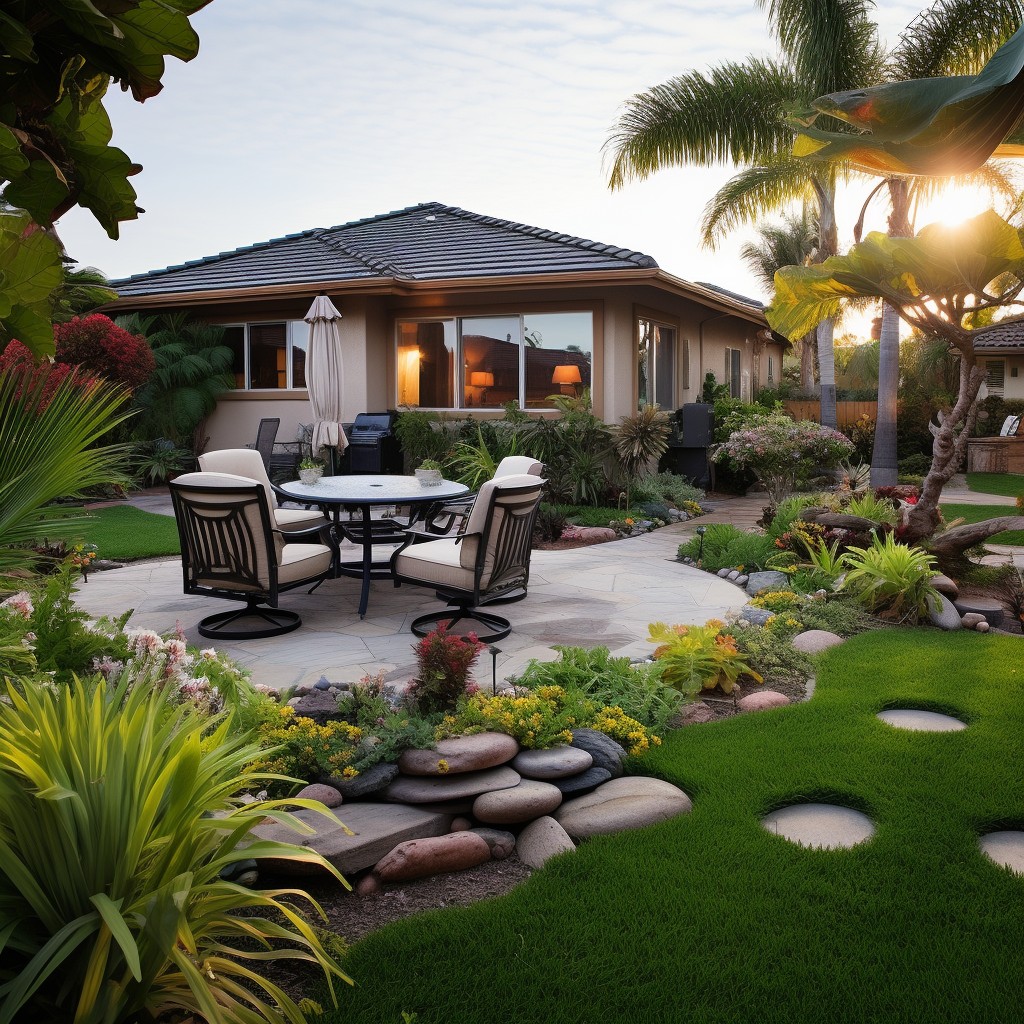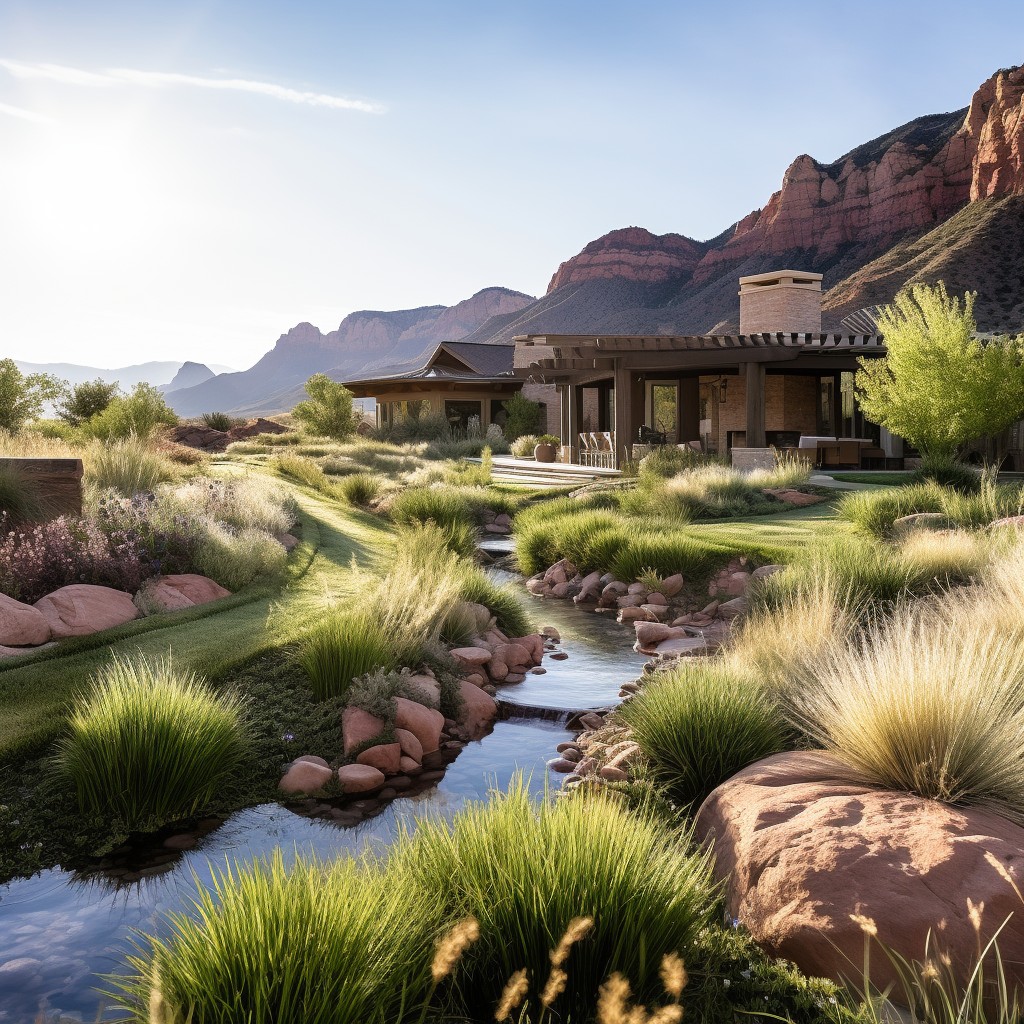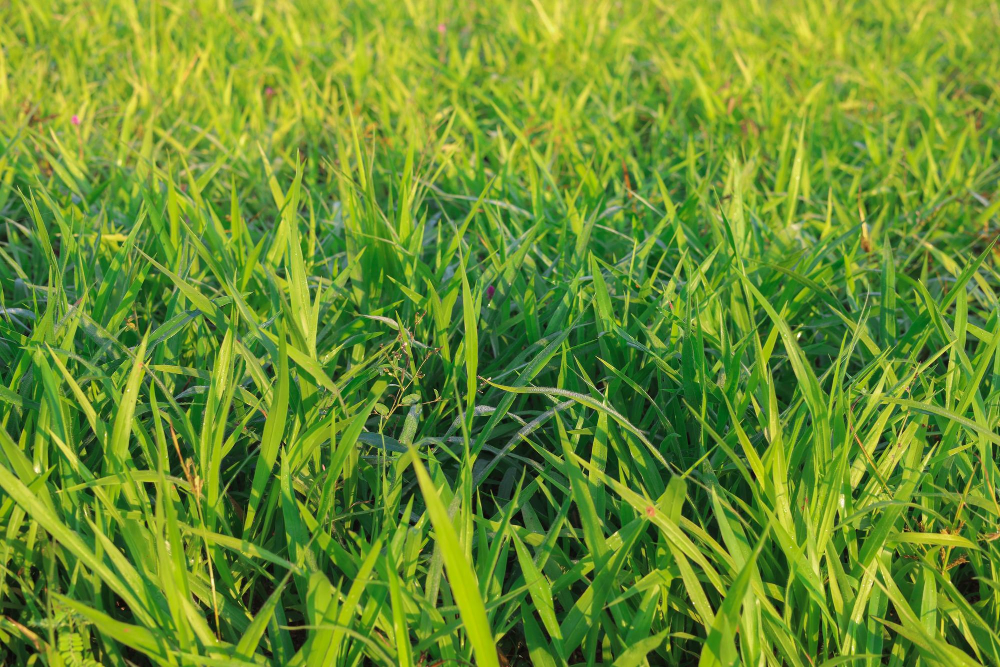Last updated on
Discover a variety of eco-friendly alternatives to artificial turf that can transform your outdoor space into a lush, green paradise while promoting sustainability and benefiting the environment.
Do you dream of having a lush, green lawn but dread the maintenance and expense of artificial turf? Look no further! In this article, we’ll explore some amazing alternatives to artificial turf that are not only budget-friendly but also eco-friendly. Whether you’re looking for a low-maintenance option or want to add some unique flair to your yard, we’ve got you covered.
So put away those fake grass samples and get ready to discover some natural solutions that will leave your neighbors green with envy!
Natural Grass Options
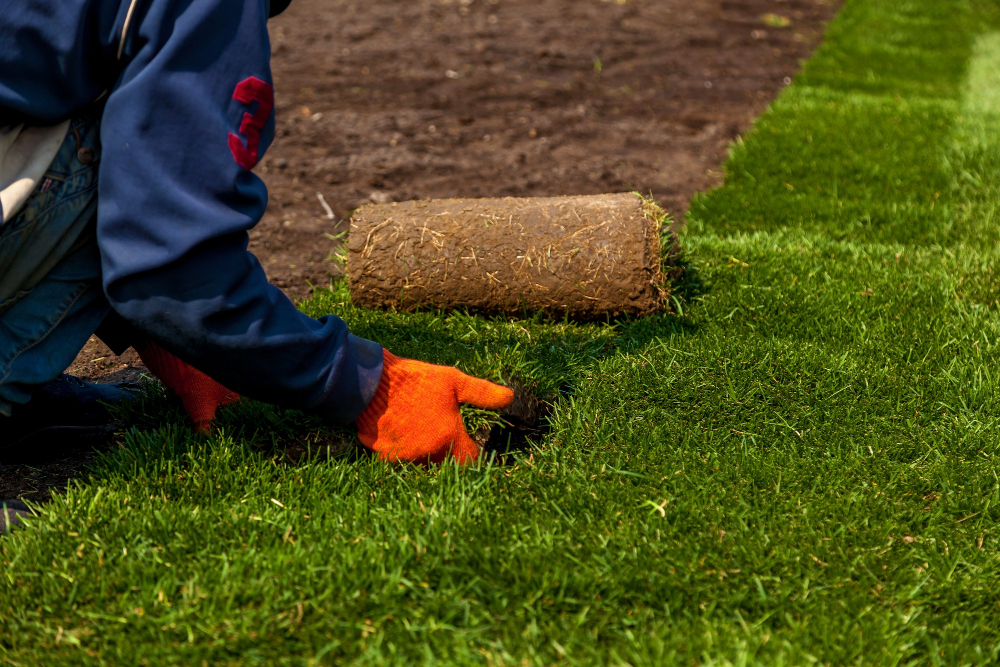
Not all types of grass are created equal. Some varieties require more maintenance than others and may not be suitable for your climate or soil type.
For example, Bermuda grass is an excellent choice if you live in a warm climate with plenty of sunshine. It’s drought-resistant and can handle heavy foot traffic without showing wear and tear.
On the other hand, fescue grass is better suited to cooler climates with moderate rainfall. It requires less water than other types of turfgrass but still maintains its green color throughout the year.
Synthetic Turf Drawbacks
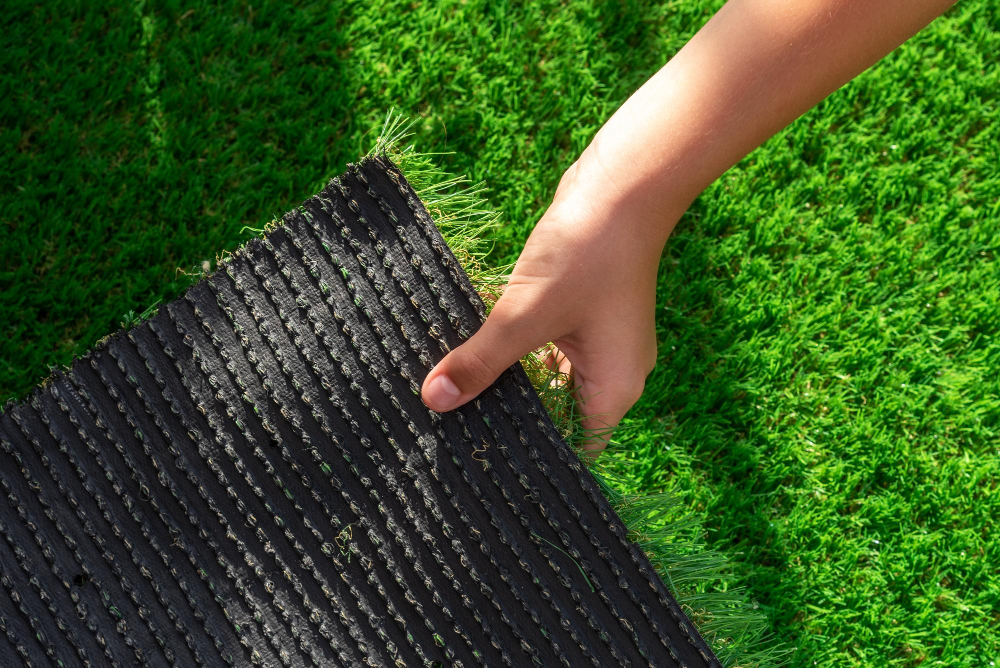
One major issue is that synthetic turf can become extremely hot in direct sunlight, making it uncomfortable to walk on and potentially harmful to pets or children playing outside. Artificial grass does not absorb water like natural grass does, which can lead to drainage problems and even flooding during heavy rainstorms.
Another concern is the environmental impact of synthetic turf production and disposal. The manufacturing process requires significant amounts of energy and resources while also producing greenhouse gas emissions.
When the time comes for replacement or disposal, most types of artificial turf cannot be recycled due to their plastic content.
Artificial Turf Vs. Natural Lawn
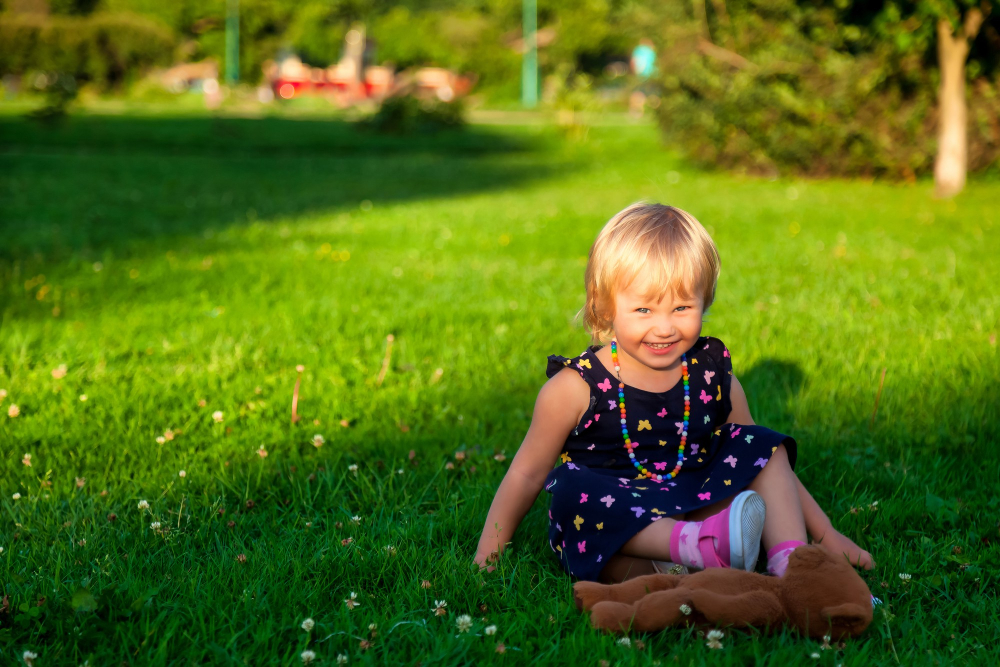
While synthetic grass may seem like a low-maintenance option, there are several drawbacks to consider. For starters, artificial turf can get hot in direct sunlight and may not be suitable for pets or children who love playing outside.
Fake grass does not provide the same benefits as natural lawns when it comes to air quality improvement or soil health.
On the other hand, maintaining a natural lawn requires more effort but offers numerous advantages that make it worth considering over its synthetic counterpart. A well-manicured lawn provides an inviting space for relaxation and recreation while also improving curb appeal of your home.
Moreover, planting native species of grasses can help support local ecosystems by providing habitats for beneficial insects such as bees and butterflies which play important roles in pollination.
Eco-Friendly Landscaping
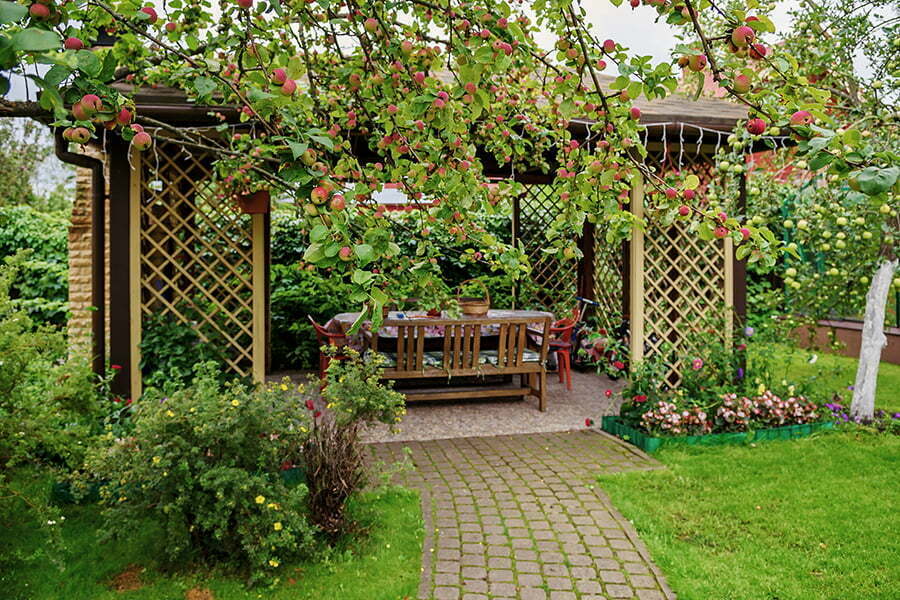
Eco-friendly landscaping is all about using sustainable practices and materials that promote biodiversity, conserve water, and reduce waste. By incorporating native plants, reducing lawn areas, composting yard waste, and installing rainwater harvesting systems or permeable pavers for driveways or patios you can create an eco-friendly landscape that benefits both your family’s health as well as our planet.
One way to achieve this is by selecting drought-tolerant plants that require less watering than traditional grass lawns. These include succulents like cacti or agave which store water in their leaves; ornamental grasses such as blue fescue which are low-maintenance; groundcovers like creeping thyme which spread quickly but don’t need much care once established.
Another option is xeriscaping principles – a type of landscaping designed for arid climates where water conservation is essential. This approach involves using native plant species adapted to local conditions along with mulch layers on top of soil surfaces so they retain moisture longer while suppressing weed growth naturally without chemicals.
Low-Maintenance Lawn Care
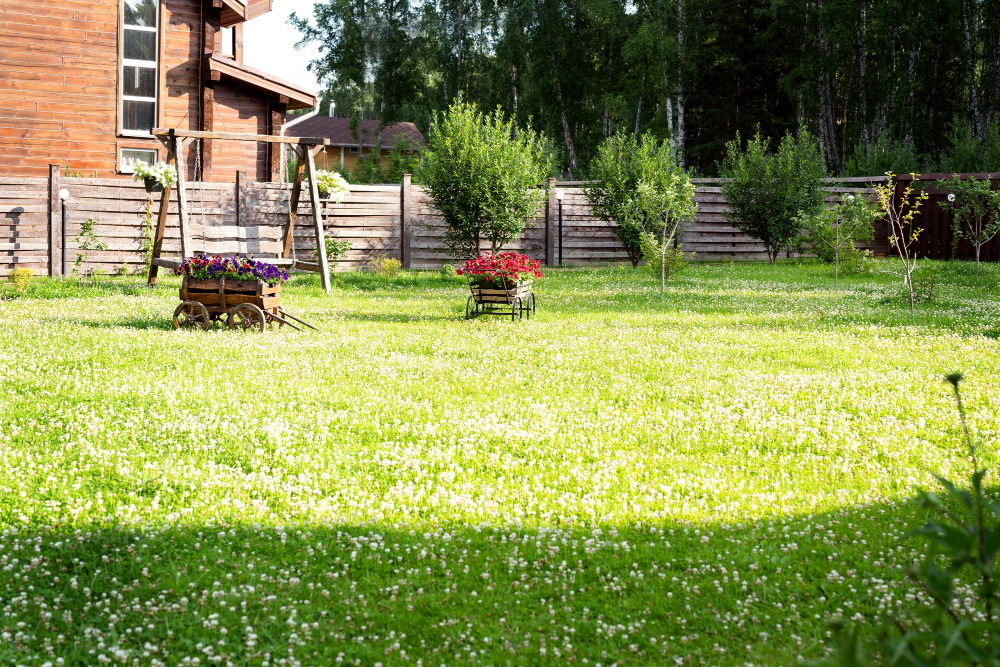
One popular choice is clover, which requires less water and fertilizer than traditional grass and stays green all year round. Another option is ornamental grasses, which come in a variety of colors and textures and require minimal upkeep.
Groundcovers like creeping thyme or sedum can also be used as an alternative to turfgrass. These plants spread quickly to cover large areas while suppressing weeds at the same time.
In addition to choosing the right type of plant material for your yard, there are other ways you can reduce maintenance requirements. For example, using mulch around trees and shrubs helps retain moisture in the soil while reducing weed growth.
Another way to minimize lawn care needs is by mowing less frequently or raising your mower blade height so that grass blades shade each other out instead of growing tall enough for frequent trimming.
Pesticide-Free Lawn Management
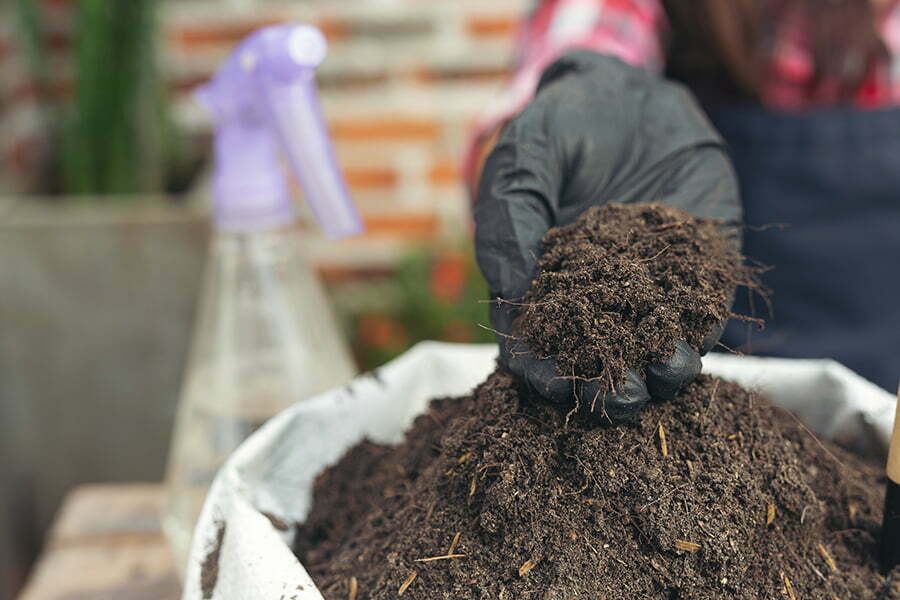
Pesticides can be detrimental to both human health and the environment, so it’s important to explore alternative methods for managing your lawn. One option is natural pest control through companion planting, which involves growing plants that repel pests or attract beneficial insects.
Another method is promoting healthy soil by adding compost and other organic matter. Healthy soil supports strong root growth and helps grass resist disease and pests naturally.
Proper mowing techniques can also help prevent pest infestations by keeping grass at an optimal height for its species. Regular watering in the morning hours will also keep your lawn hydrated without creating conditions conducive to fungal growth.
Drought-Tolerant Plants

There are many drought-tolerant plants that can thrive in hot and arid conditions without requiring much water or maintenance. These plants come in a variety of colors, textures, and sizes to suit any landscaping style.
Some popular options for drought-resistant ground covers include succulents like sedum and hens-and-chicks as well as ornamental grasses such as blue fescue or fountain grass. For larger areas, consider planting native shrubs like manzanita or ceanothus which have adapted to survive with minimal watering.
By incorporating these hardy plant varieties into your landscape design you can create an attractive outdoor space that requires less water while still providing visual interest throughout the year.
Groundcover Plant Varieties
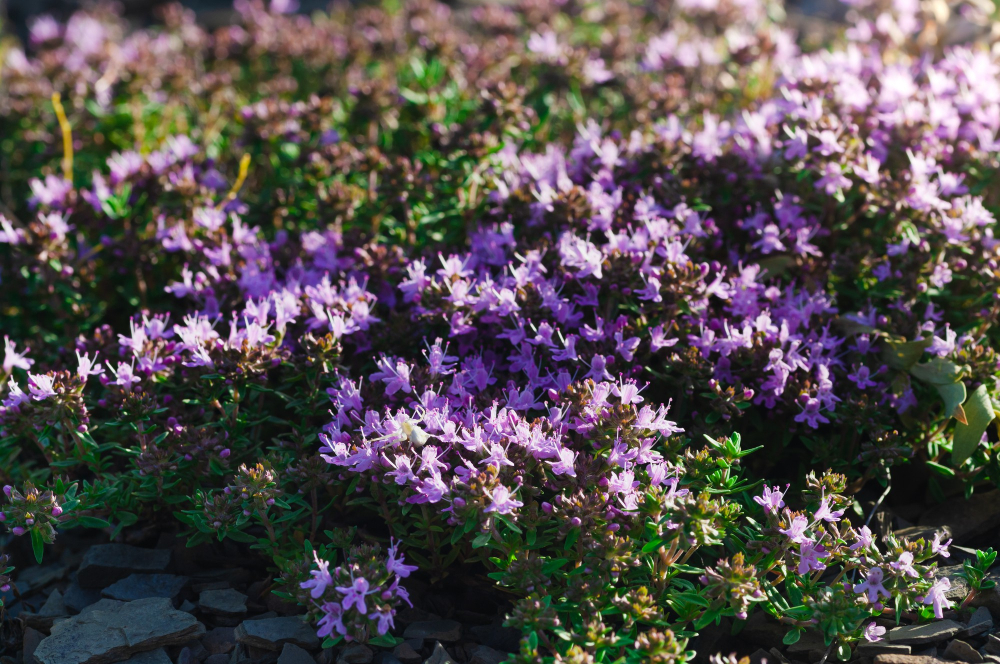
They can be used to cover large areas of land and provide a low-maintenance solution that is both beautiful and functional. Groundcovers come in many varieties, from creeping thyme to sedum, and each has its unique characteristics.
Creeping Thyme: This fragrant herb is perfect for sunny spots with well-draining soil. It forms a dense mat of tiny leaves that bloom with pink or purple flowers in the summer.
Sedum: These succulent plants thrive in hot, dry conditions and require little water or maintenance once established. They come in many colors and textures, making them ideal for rock gardens or as borders around patios.
Ajuga: Also known as bugleweed, this groundcover plant grows quickly into thick mats of foliage that produce spikes of blue-purple flowers throughout the spring months.
Vinca Minor: This evergreen perennial produces glossy green leaves year-round while also producing delicate blue-violet blooms during the spring season. Using groundcovers instead of artificial turf not only adds beauty but also helps promote biodiversity by providing habitats for beneficial insects like bees and butterflies while reducing erosion caused by heavy rainfall events.
Xeriscaping Principles
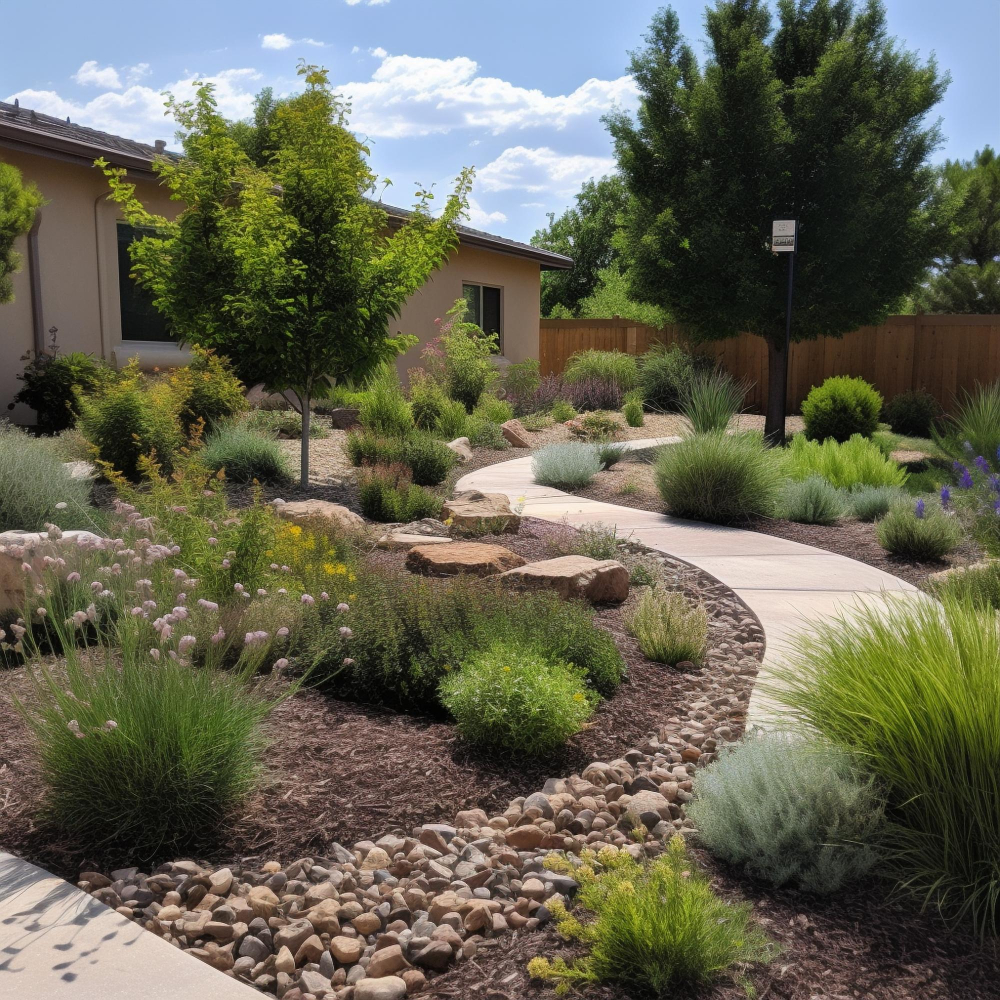
This approach to gardening can help you save money on your water bill while also promoting sustainability. Xeriscaping principles involve selecting native plant species, grouping plants with similar watering needs together, and incorporating hardscaping elements like rocks or gravel to reduce the amount of turf grass in your yard.
By implementing xeriscaping principles into your outdoor space, you can create a beautiful landscape that requires minimal maintenance and conserves resources. Some popular xeric plant options include succulents, cacti, lavender, sagebrush and yucca – all of which are low-maintenance choices for those who want an eco-friendly garden without sacrificing beauty.
Native Plant Selection
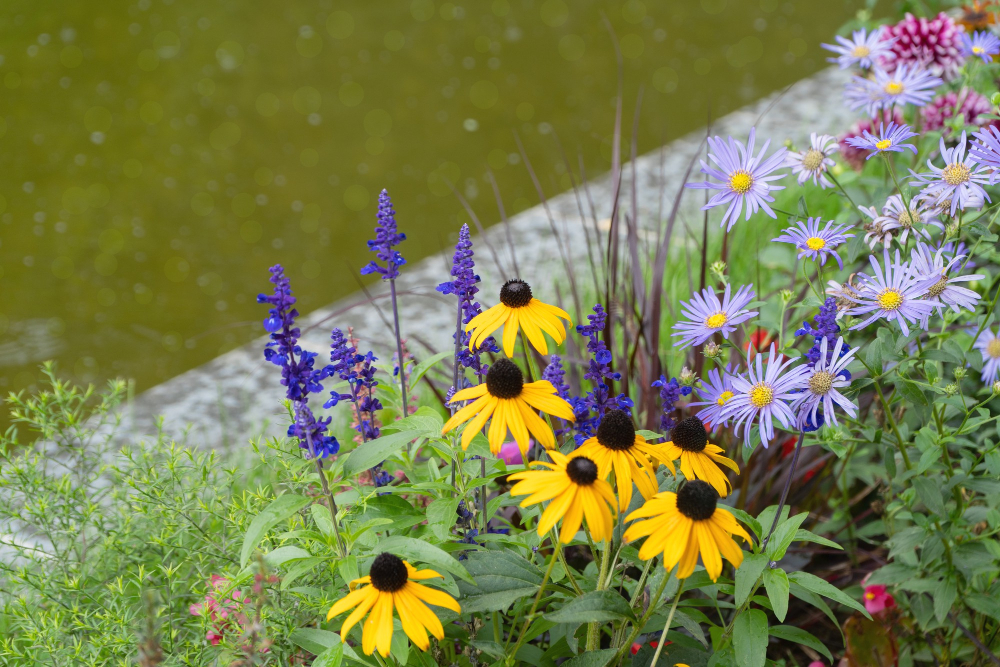
Native plants are adapted to local conditions, which means they require less water, fertilizer, and maintenance than non-native species. They also provide habitat for local wildlife such as birds and butterflies.
When choosing native plants for your yard or garden, consider factors such as soil type, sun exposure levels, and climate zone. Some popular options include wildflowers like coneflowers or black-eyed susans that add pops of color while attracting pollinators; grasses like switchgrass or little bluestem that offer texture without requiring mowing; shrubs like serviceberry or spicebush that provide food sources for birds; trees like oak or maple that offer shade in the summer months.
Organic Ground Covers
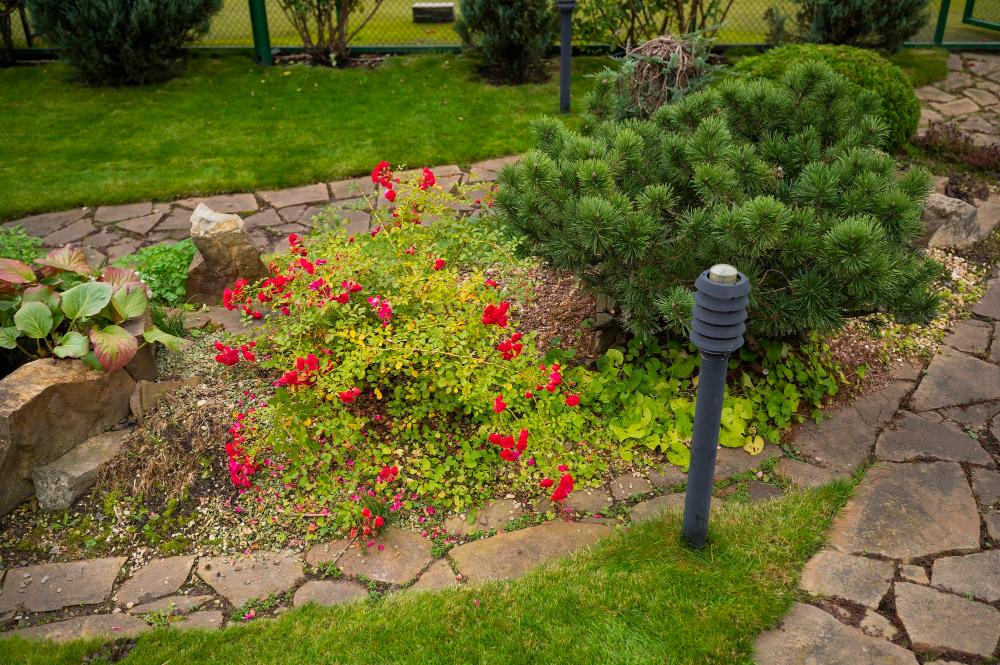
These plants not only provide an attractive, low-maintenance option for covering bare soil but also offer numerous environmental benefits.
One of the most significant advantages of organic ground covers is their ability to prevent soil erosion. By spreading their roots deep into the earth, they help hold the soil in place and protect it from being washed away by rain or wind.
Another benefit of using organic ground covers is that they require little water once established, making them ideal for drought-prone areas. They also act as natural weed suppressants, reducing the need for harmful pesticides or herbicides.
Some popular options include creeping thyme, clover varieties such as Dutch white clover or crimson clover (which fix nitrogen in soils), sedum species like stonecrop (which store water in leaves), ajuga reptans (also known as bugleweed) with its blue-purple flowers and evergreen foliage; all these plants have shallow root systems which make them perfect choices when planting on slopes where erosion control is needed.
Sustainable Hardscaping
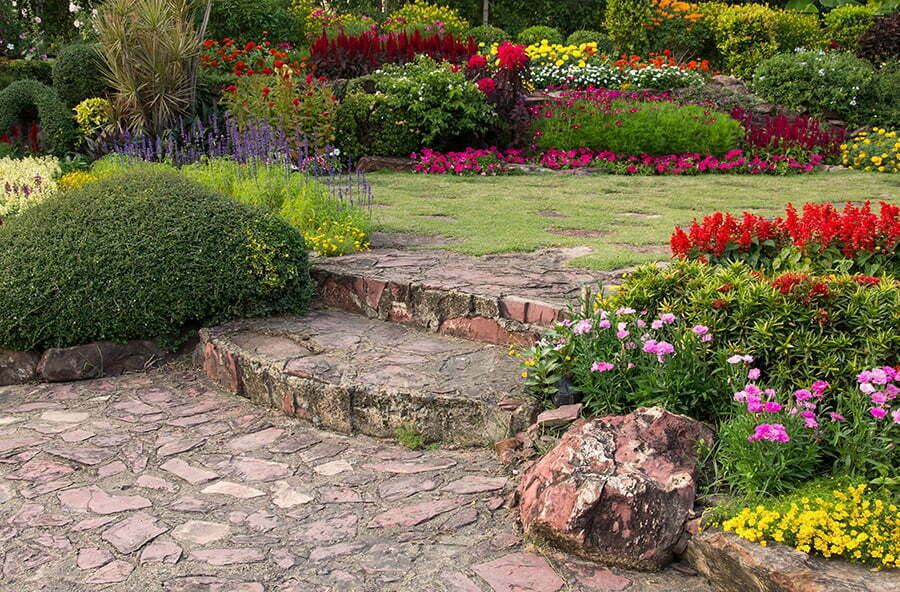
Hardscaping refers to the use of non-living materials such as stone, concrete, or wood in landscaping design. However, traditional hardscape materials can be resource-intensive and may not be environmentally friendly.
Fortunately, there are many sustainable alternatives available that can help you create a beautiful and eco-friendly landscape. For example, permeable pavers allow rainwater to seep into the ground instead of running off into storm drains or causing erosion.
These pavers come in a variety of styles and colors so you can choose one that complements your home’s architecture.
Another option for sustainable hardscaping is using gravel or crushed stone surfaces for walkways or patios instead of concrete slabs. Gravel allows water infiltration while providing good drainage which reduces runoff during heavy rains.
Permeable Pavers Benefits
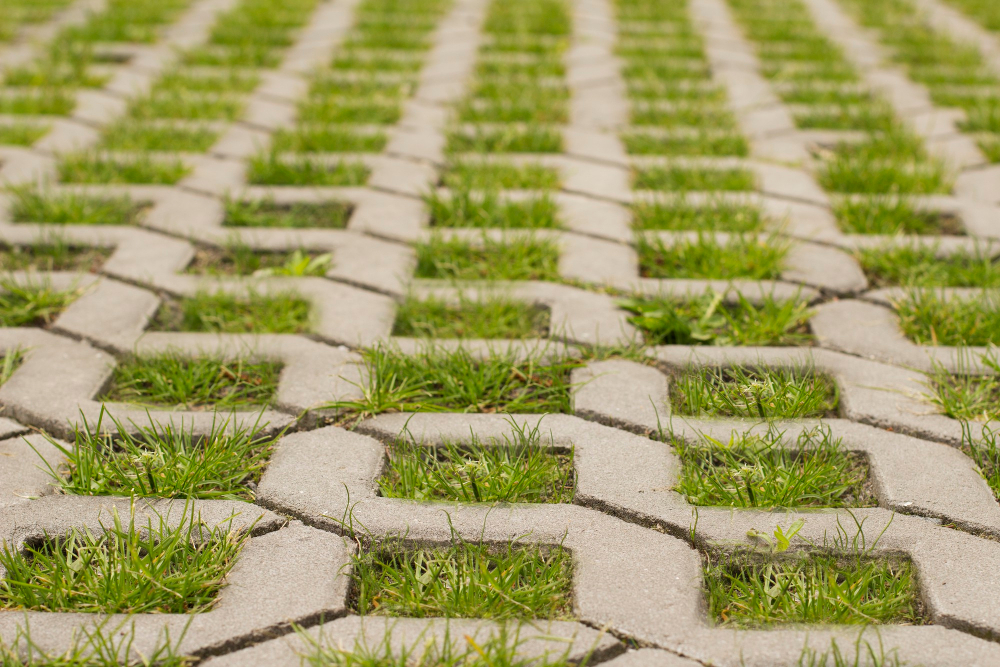
These innovative pavers allow rainwater to seep through the surface and into the ground, reducing runoff and preventing erosion. They also help filter pollutants from stormwater before it enters local waterways.
One of the main benefits of permeable pavers is their ability to reduce flooding by allowing water to infiltrate into the soil rather than pooling on top of hard surfaces. This can be especially important in areas prone to heavy rainfall or flash floods.
Another advantage is that they require less maintenance than traditional paving options since they don’t need regular cleaning or sealing. Plus, because they’re made from natural materials like gravel, sand, and stone chips, permeable pavers blend seamlessly with surrounding landscaping for a more cohesive look.
Gravel and Stone Surfaces
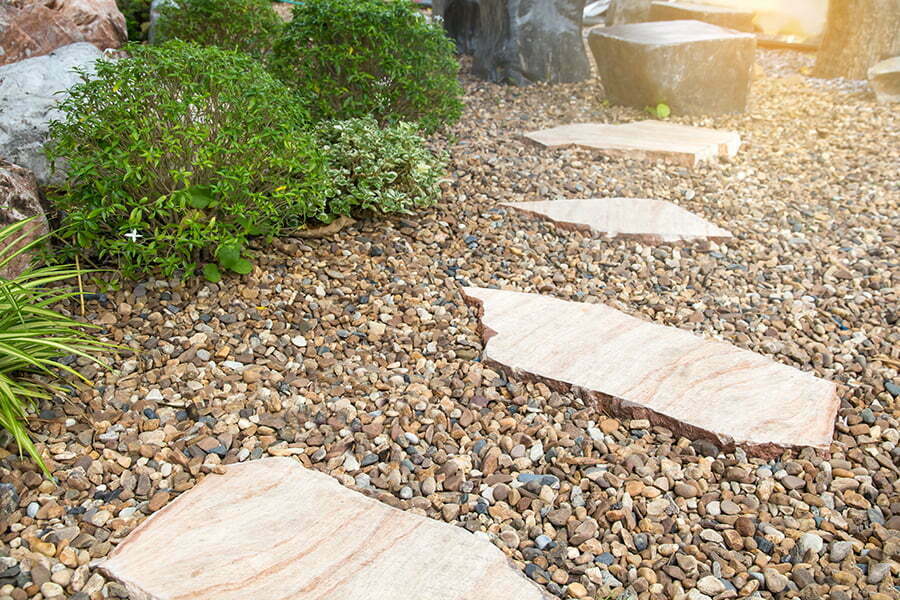
These materials can be used in various ways, from creating walkways and patios to covering large areas of the yard. Gravel is available in different sizes and colors, making it easy to find one that complements your home’s exterior.
Stone surfaces are also popular because they add texture and depth to any landscape design. They come in many shapes, sizes, textures, patterns as well as colors that can match any style or preference.
One of the benefits of using gravel or stone instead of artificial turf is their low maintenance requirements. Unlike synthetic grass which requires regular cleaning with water or chemicals; gravel only needs occasional raking while stones require no maintenance at all.
Another advantage is their durability – both materials last longer than most other ground covers like mulch or wood chips since they don’t decompose over time nor attract pests such as termites.
Lastly but not least important: these options allow rainwater infiltration into the soil beneath them which helps replenish groundwater reserves rather than contributing towards runoff problems caused by impermeable surfaces like concrete slabs.
Rainwater Harvesting Systems
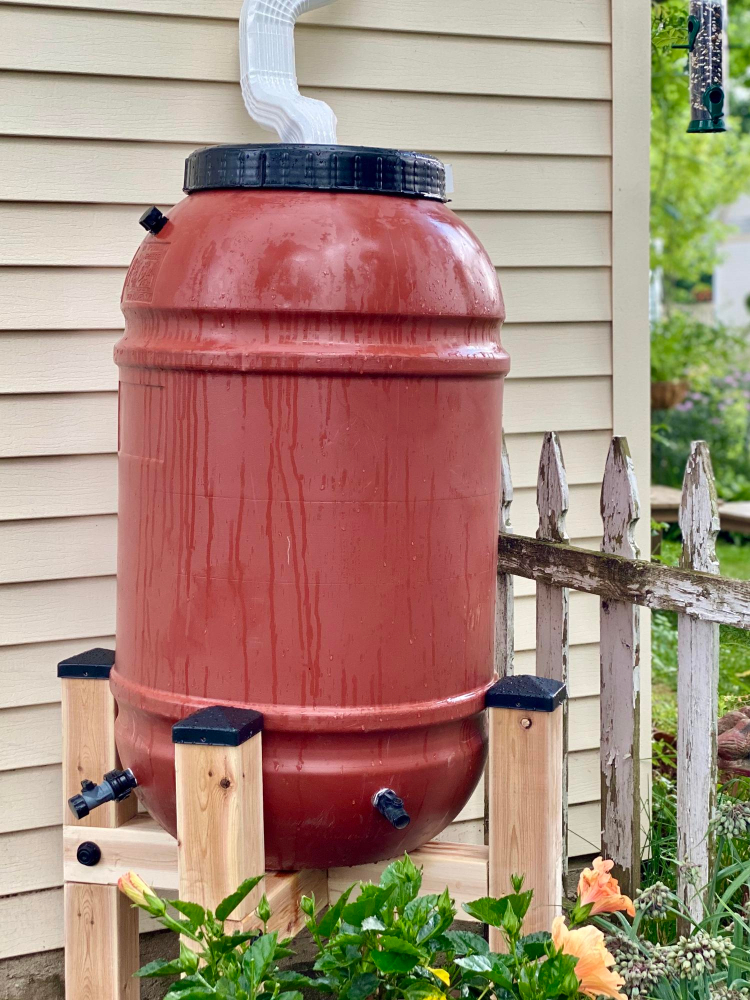
These systems collect and store rainwater, which can then be used for watering plants and grass. Not only does this reduce your water bill, but it also helps conserve water resources.
There are several types of rainwater harvesting systems available on the market today, ranging from simple barrel-style containers to more complex underground cisterns that can hold thousands of gallons of water. Some homeowners even choose to install elaborate gutter systems that direct rainfall into large storage tanks.
When choosing a system for your home, consider factors such as cost, maintenance requirements, and local regulations regarding rainwater collection. You may also want to consult with a professional landscaper or plumber who specializes in these types of installations.
Grass Species for Different Climates

Different types of grass thrive in different environments, so it’s important to select one that can withstand the weather conditions in your area. For example, cool-season grasses like Kentucky bluegrass and fescue are ideal for regions with cold winters and hot summers.
On the other hand, warm-season varieties such as Bermuda and Zoysia do best in areas with mild winters and long periods of heat.
Before selecting a type of grass seed or sod for your lawn project, research which species will work best based on where you live. You may also want to consider factors such as soil type and sun exposure when making your decision.
Bio-Swales and Infiltration Basins
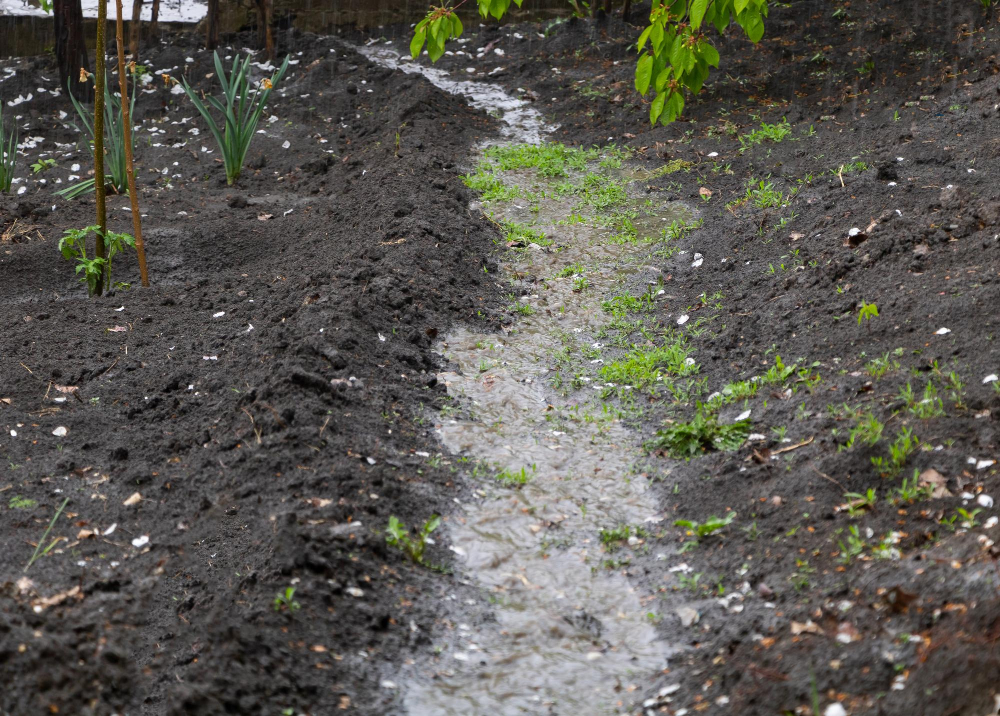
These features work by collecting rainwater from roofs, driveways, and other surfaces and directing it into a shallow depression filled with vegetation or gravel. The plants in the bio-swale absorb pollutants from the water as it slowly infiltrates into the ground.
Infiltration basins are similar but typically larger than bio-swales, designed for areas with more significant drainage issues. They also use natural materials such as rocks or sand instead of vegetation to filter out contaminants.
Not only do these features reduce erosion caused by heavy rainfall events, but they also promote groundwater recharge which is essential during droughts. Bio-swales and infiltration basins can be incorporated into any landscaping design style; they add texture variation while providing an attractive habitat for birds and insects.
Zen Garden Design Ideas
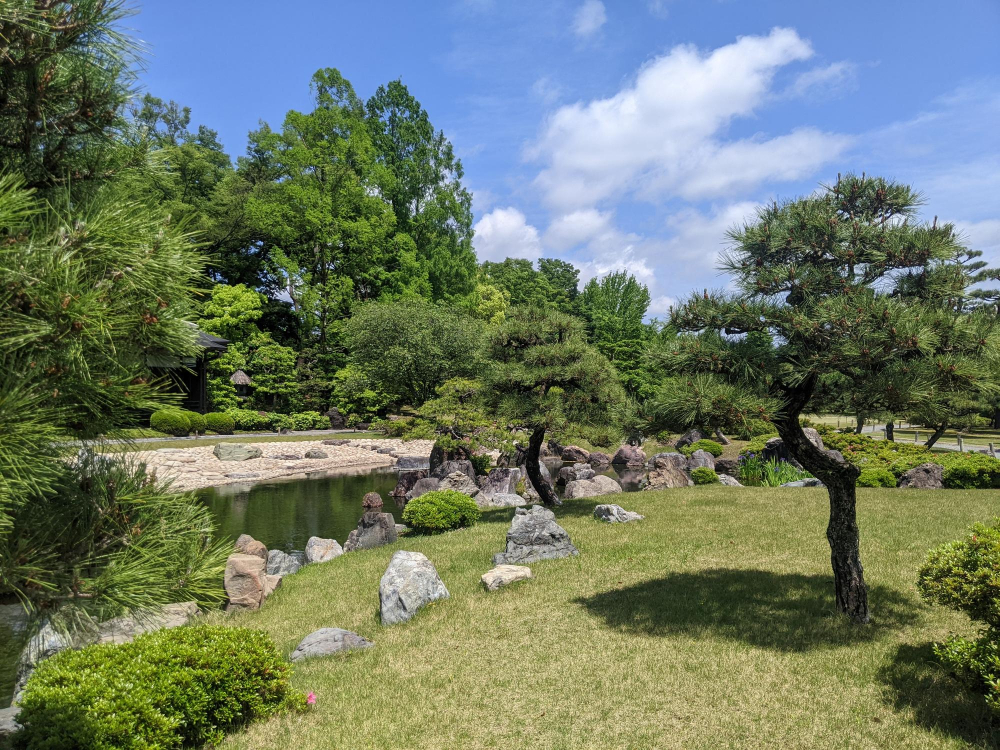
These minimalist designs feature carefully arranged rocks, sand or gravel raked into patterns to represent water and islands. Zen garden design ideas can be incorporated into any size yard or patio area.
To create your own zen garden oasis, start by selecting an area with good drainage that receives plenty of sunlight throughout the day. Next, choose a focal point such as a large boulder or statue to anchor the design around.
Once you have your focal point selected begin adding elements like small stones and pebbles to create pathways through the garden. Use larger rocks placed strategically throughout the space to add interest while creating visual balance.
Finally add plants sparingly using low maintenance options like succulents which require little watering but still provide greenery within your zen retreat.
Green Roof Installation

A green roof is essentially a living garden installed on top of your home or building. It can help reduce energy costs by insulating the structure, absorb rainwater to prevent runoff and erosion, improve air quality by filtering pollutants, and provide habitat for birds and insects.
Installing a green roof requires careful planning to ensure that it’s structurally sound enough to support the weight of soil, plants, water retention layers as well as drainage systems. You’ll need professional assistance from experts in this field who will assess whether your building is suitable for such installation.
Once you’ve determined that installing a green roof is feasible; you can choose between two types: intensive or extensive. Intensive roofs require more maintenance because they have deeper soil beds which allow larger plants like shrubs or even trees but also offer more opportunities for gardening activities like growing vegetables while extensive ones are less demanding since they have shallow soils with low-growing vegetation such as sedum species.
In conclusion; if you’re looking into eco-friendly alternatives when it comes to landscaping options then consider installing a Green Roof! Not only does it add beauty but also provides numerous environmental benefits while reducing energy bills over time!
FAQ
Why not to use artificial turf?
Artificial turf is not advisable due to its potential to overheat in hot weather, contribute to global warming by absorbing more radiation, and displace living plants that remove carbon dioxide through photosynthesis.
What is the difference between artificial grass and synthetic turf?
Artificial grass is longer and fluffier landscape grass, while synthetic turf refers to shorter sports grass.
What is the disadvantage of artificial turf?
Disadvantage: Artificial turf has a shorter lifespan (7-15 years) compared to natural grass, requiring eventual replacement and maintenance.
How do you lay artificial grass cheaply?
To lay artificial grass cheaply, use many nails as a less secure but viable seaming method, especially if the grass will not experience heavy foot traffic.
What are the eco-friendly alternatives to artificial turf for landscaping purposes?
Some eco-friendly alternatives to artificial turf for landscaping purposes include native plants, drought-tolerant plants, and permeable paving.
How does the maintenance of natural grass compare to that of artificial turf?
Maintenance of natural grass typically requires more frequent care, including mowing, watering, and fertilizing, while artificial turf is low-maintenance and requires less attention.
What factors should be considered when choosing between artificial turf and traditional grass for a specific area or project?
When choosing between artificial turf and traditional grass, consider factors such as installation costs, maintenance requirements, environmental impacts, usage, and aesthetic preferences.
Recap
Liked this article? Here's what you can read next:
